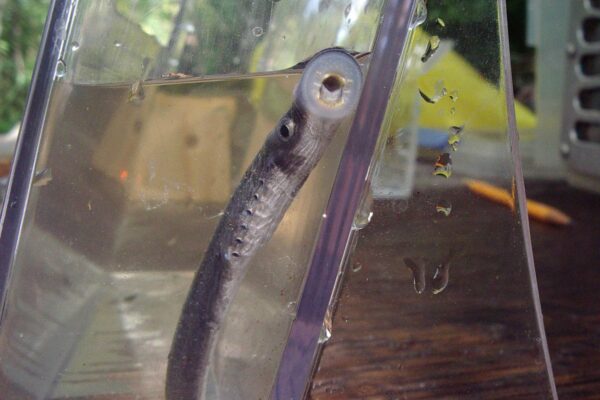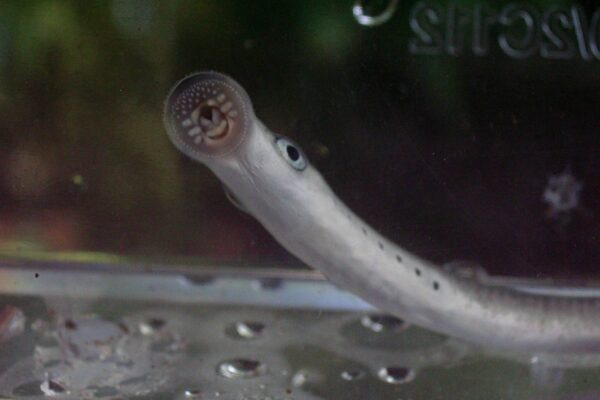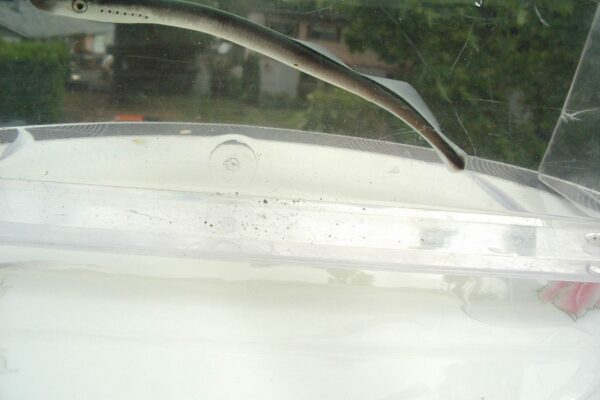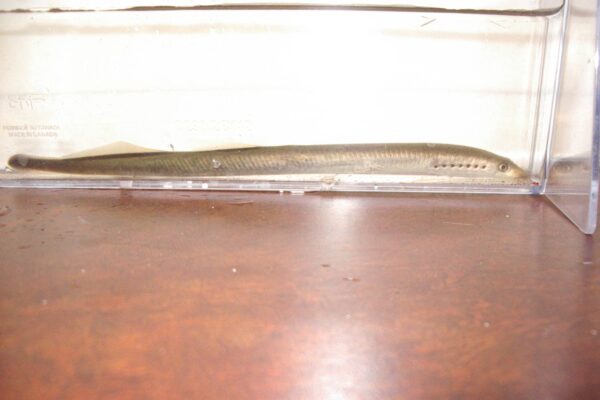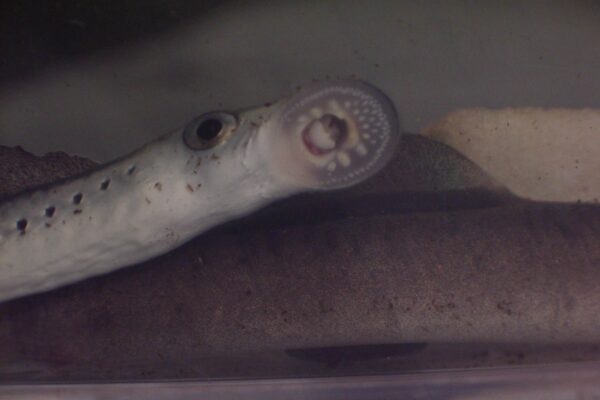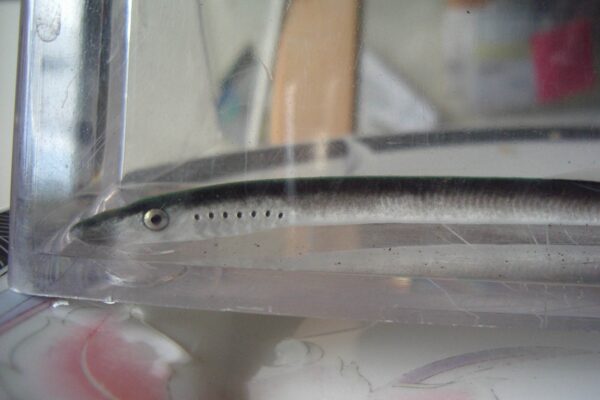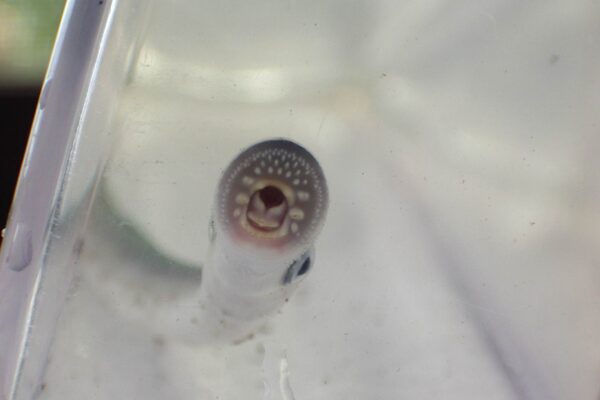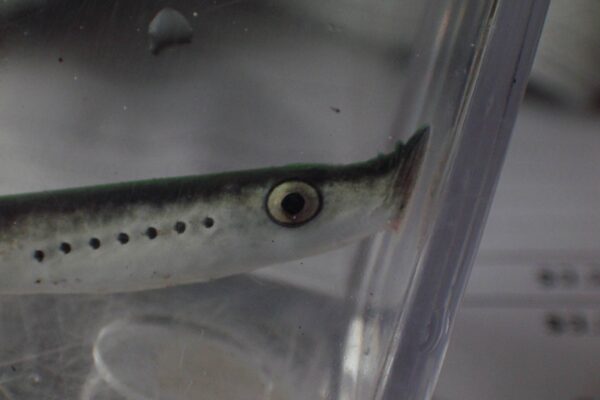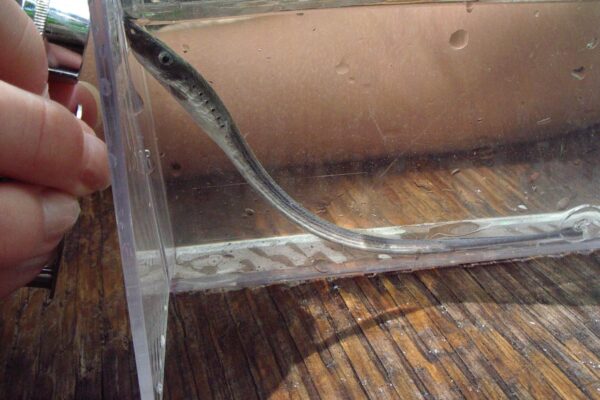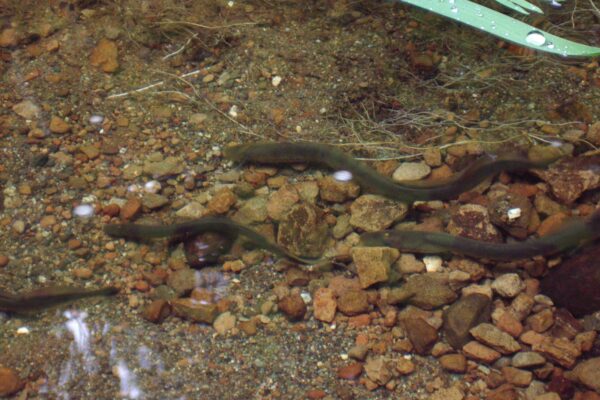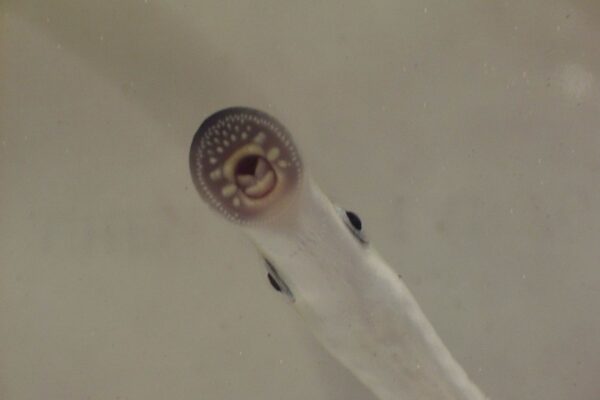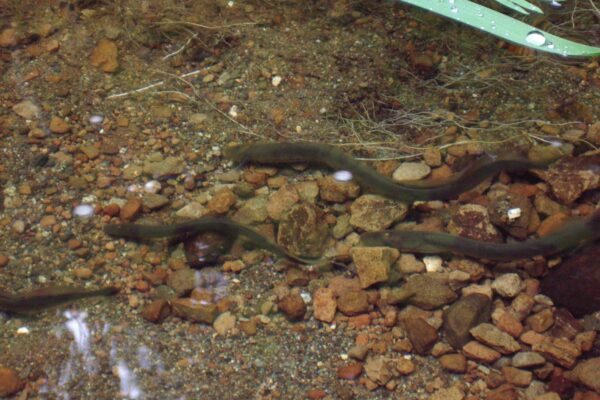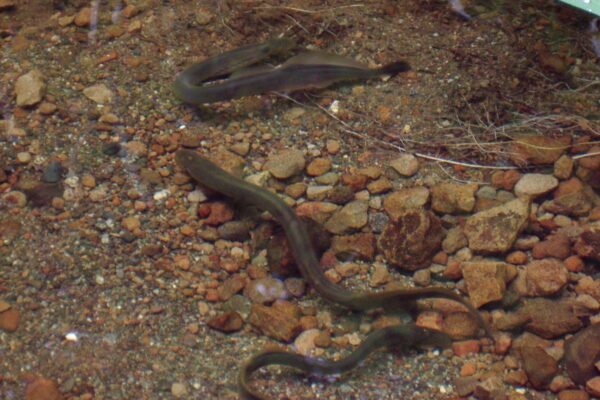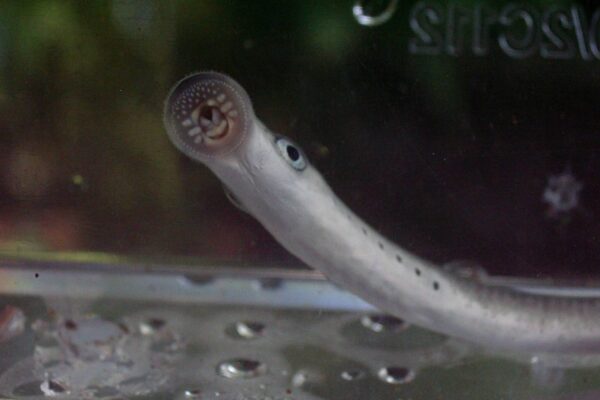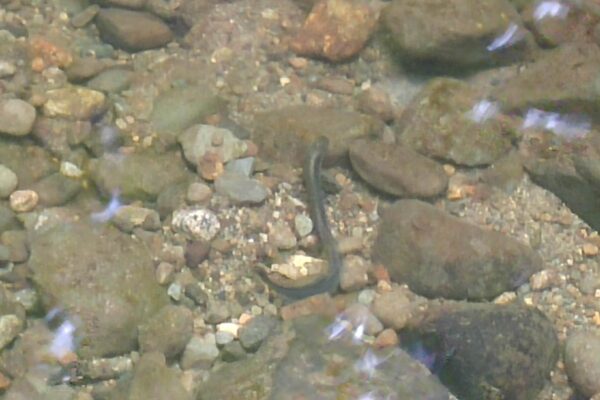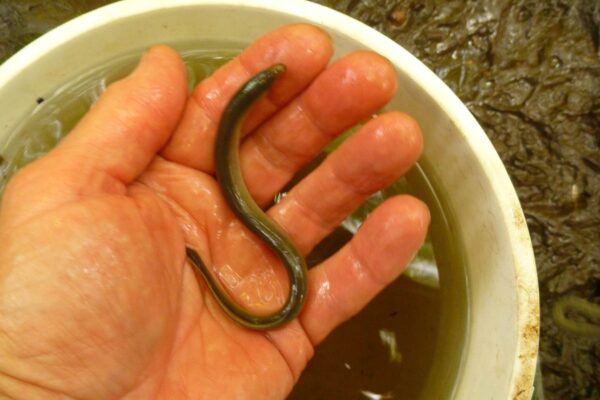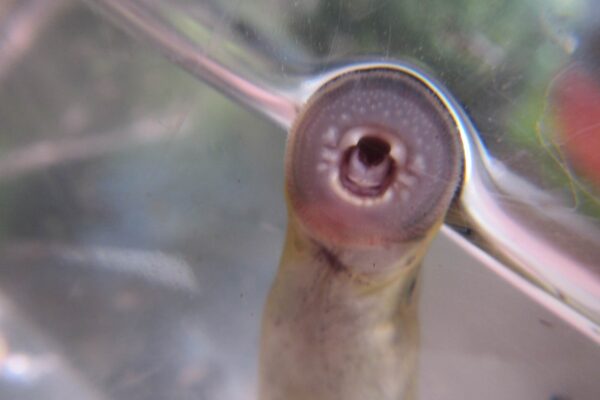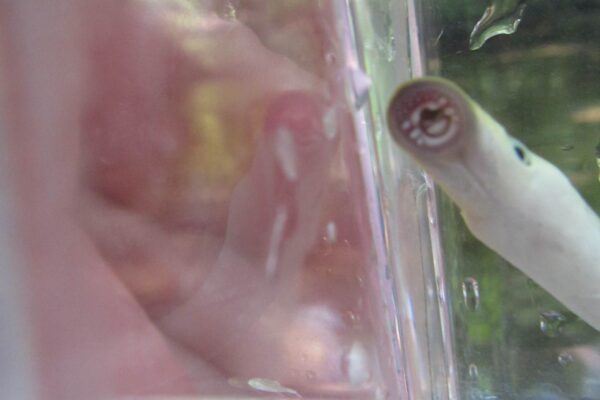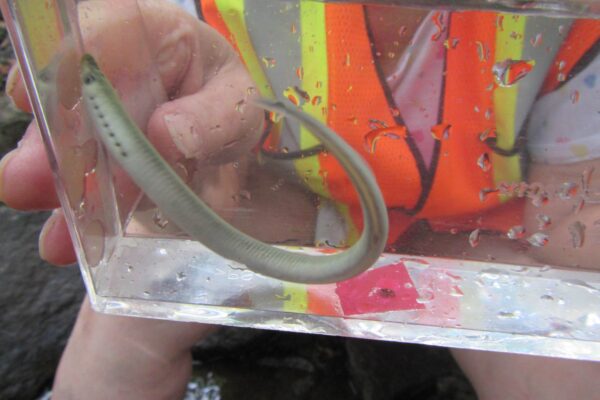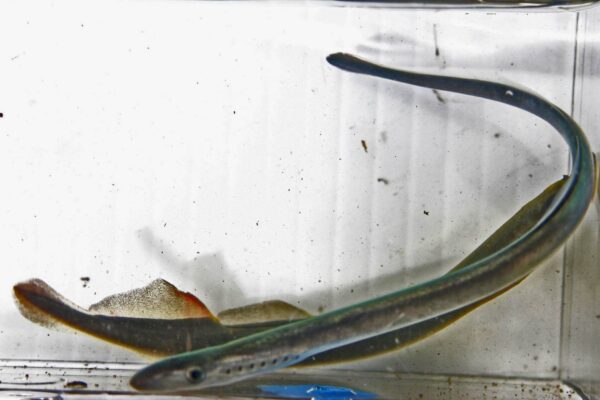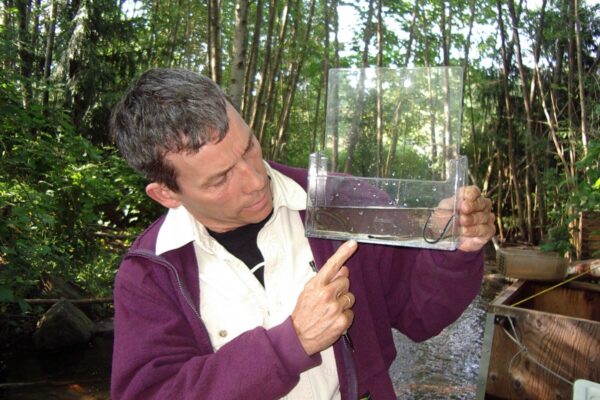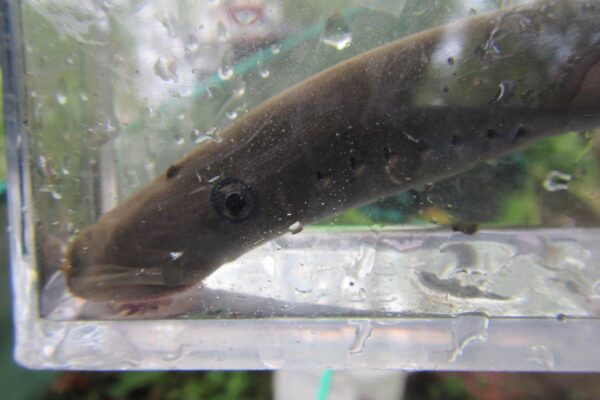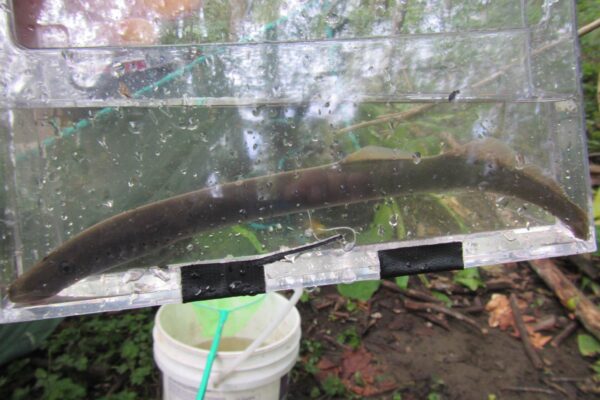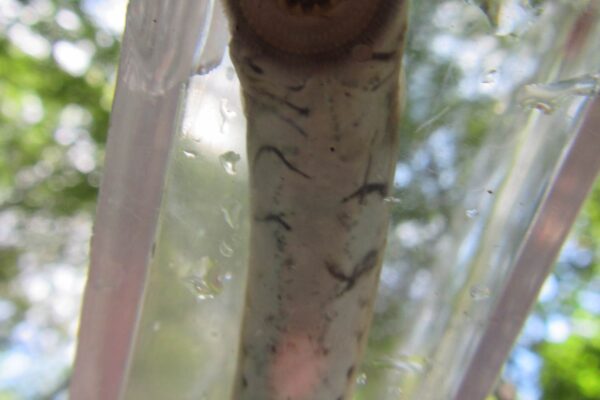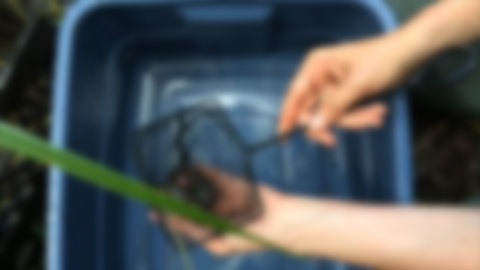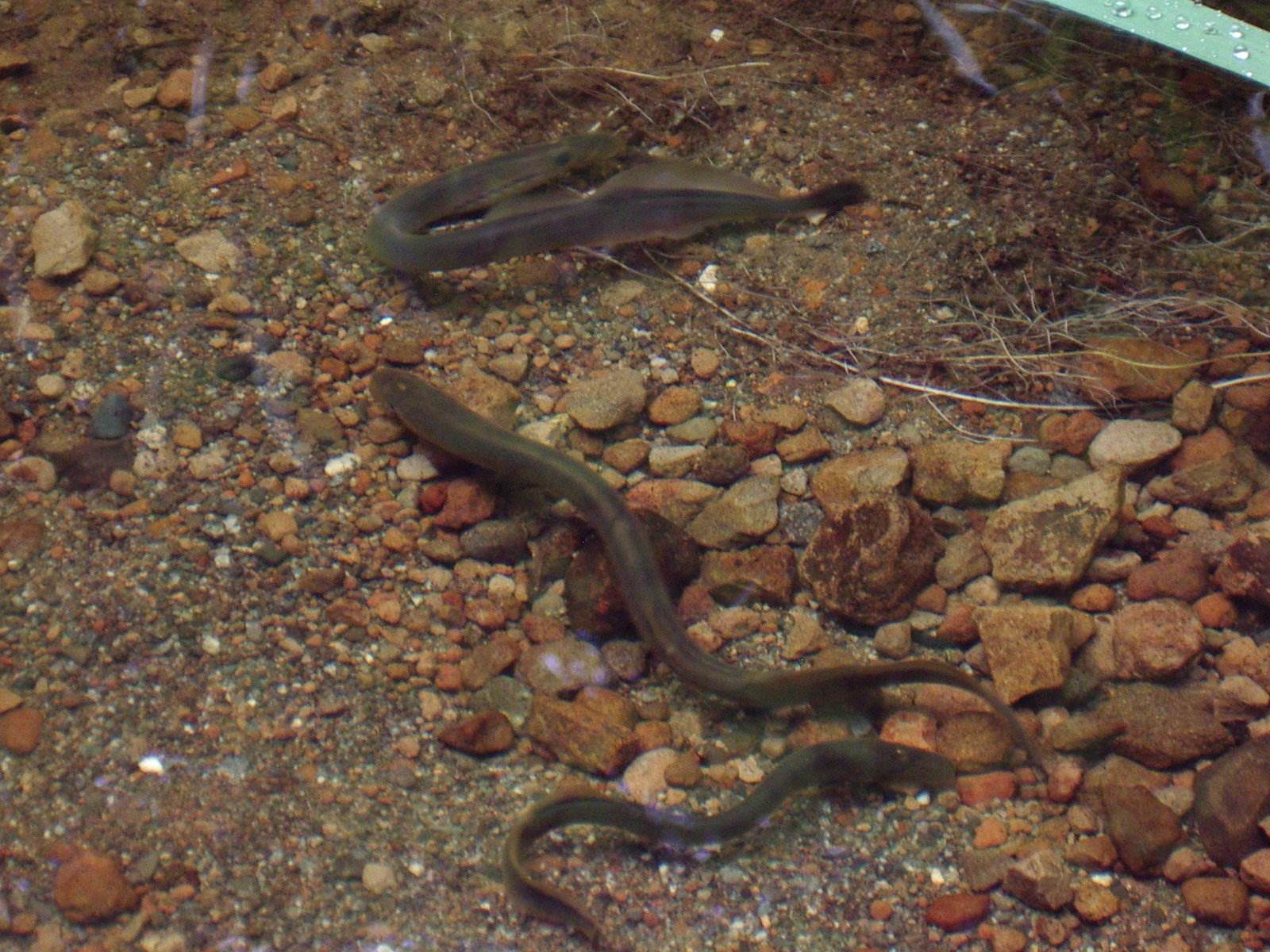
Left: Lamprey building a nest
Lamprey spawn as a group, working together to make a nest, similar to a salmon red only much smaller, perhaps 4 to 6 cm. They pick up surprisingly large pebbles with their sucker mouths, carefully placing them to form the rim of the nest. Eggs are the size of coarse sand.
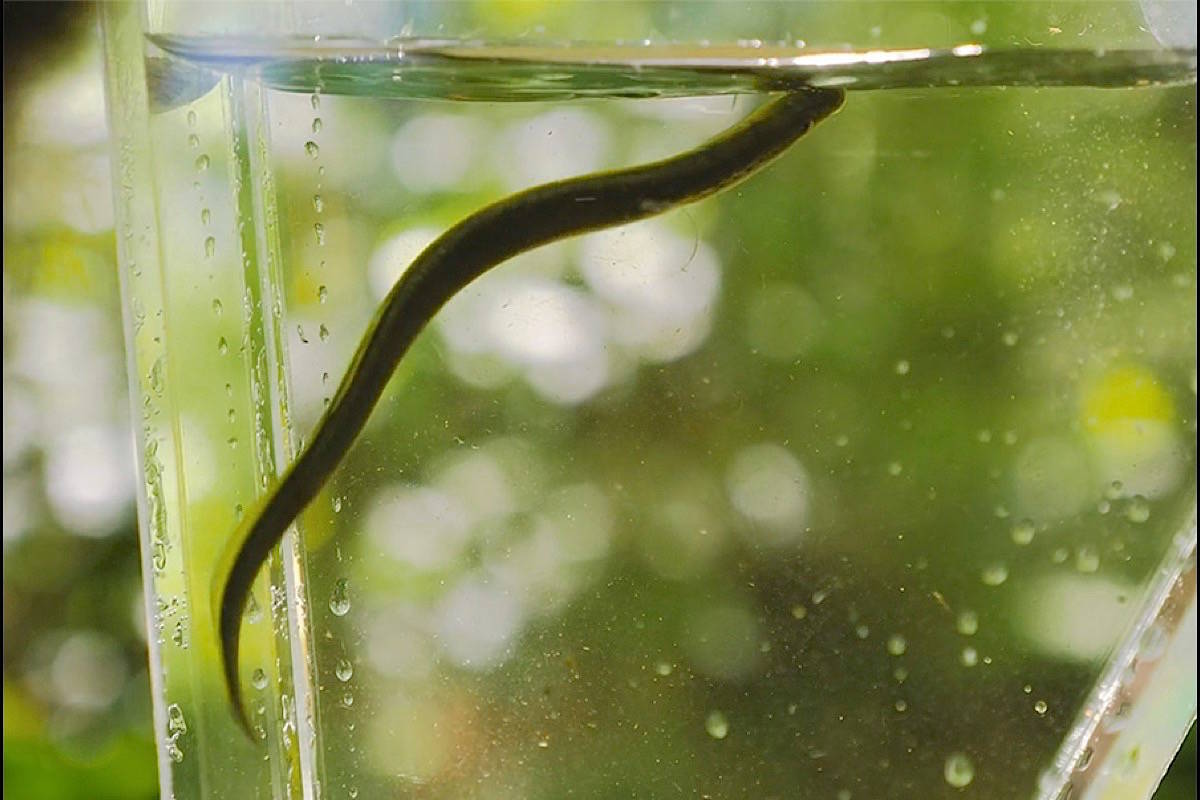
The Lamprey of Morrison Creek
The Lamprey is one of the oldest families of living fishes. Lamprey date back approximately 300 million years. Lampreys belong to the group Agnatha, the “jawless fishes”
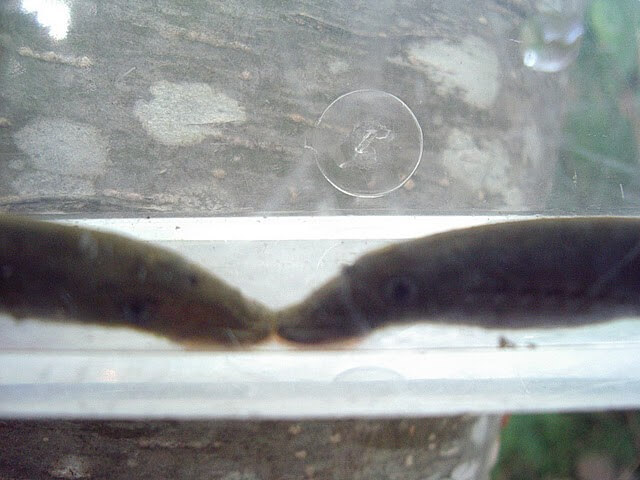
A mated pair of lamprey.
When lamprey are sexually mature, females can often be identified by some of these features:
- Obvious swelling from gills to cloaca
- Reddening around the cloaca
- Eggs may be visible through the skin
- A conspicuous fin fold behind the cloaca
- Upswept tail
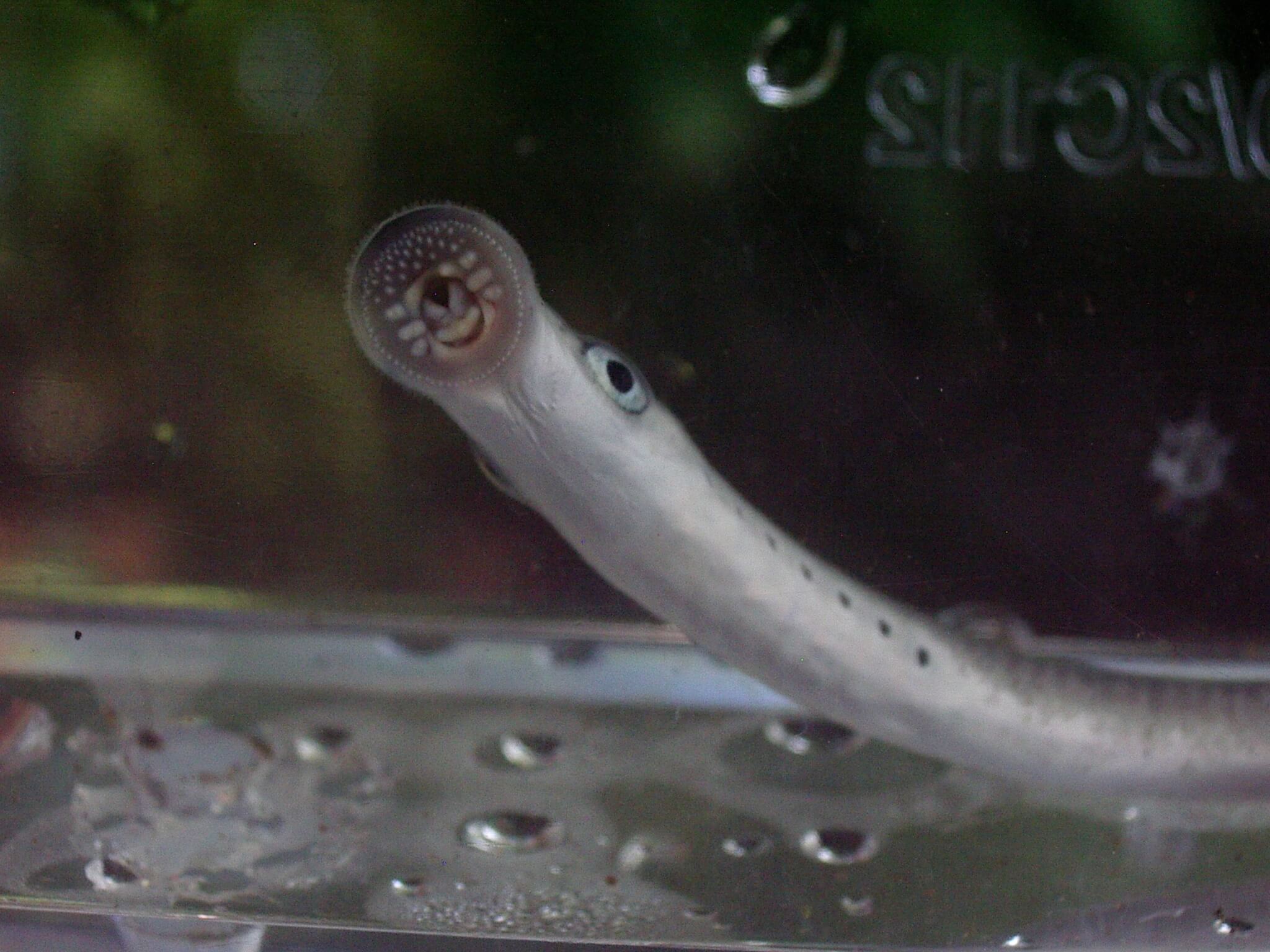
Marifuga
Left: Shiny black and white Marifuga Lamprey ready for a mate.
In Morrison Creek, resident lamprey, Lampetra richardsoni spawn in spring, as late as early June.
Morrison Creek Streamkeepers have observed some of the sites.
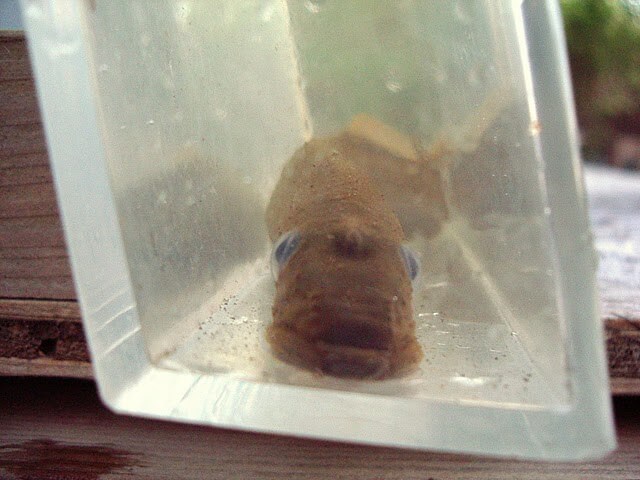
Tridentata
Although we focus on the endangered marifuga, they aren’t the only lamprey in the creek as this big bruiser of a tridentata shows.
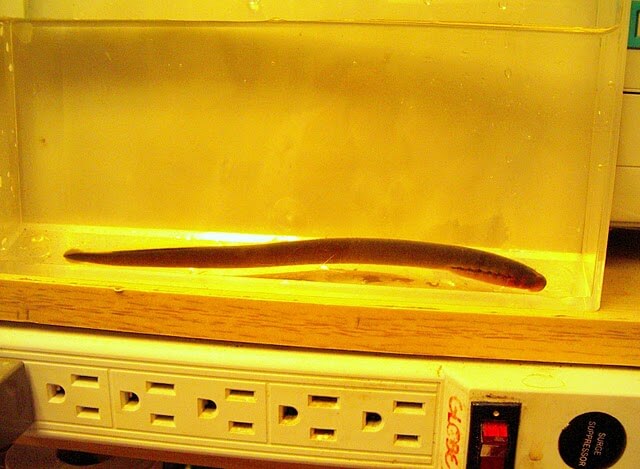
Ammocoetes
About two weeks after spawning, lamprey eggs hatch and life as an ammocoete (larval stage) begins. For the next several years, they will live burrowed in mud in a calm section of the stream. These baby lamprey are blind (they have no eyes) and no sucker mouth as they just feed in the detritus.
Lamprey Monitoring
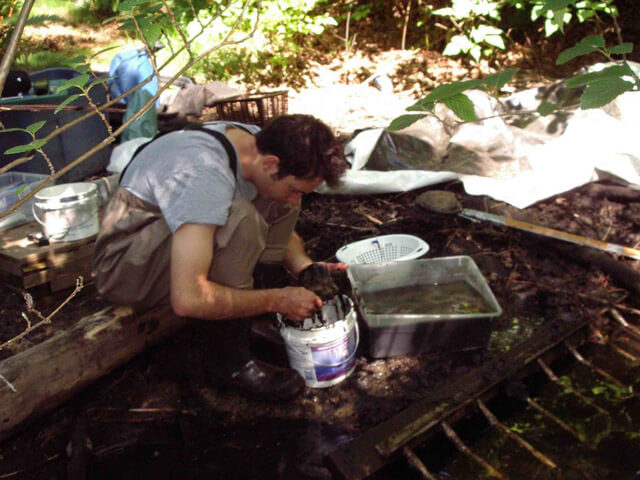
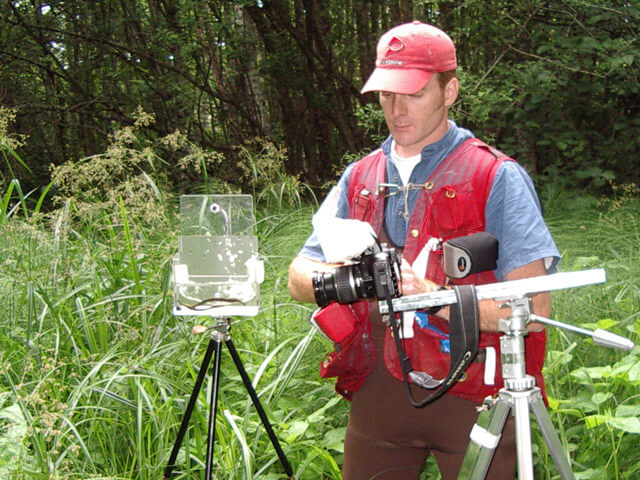
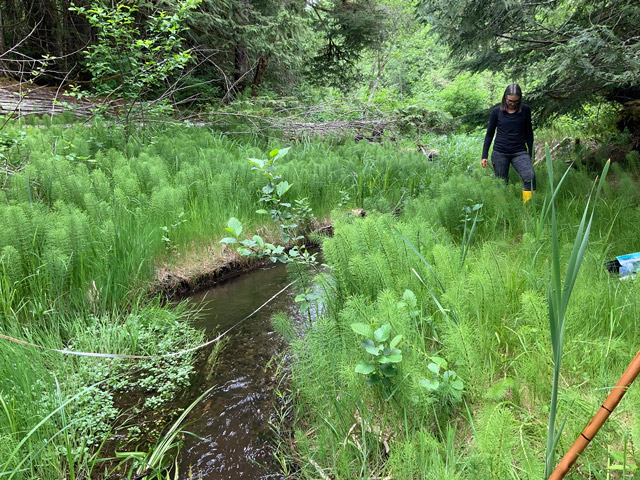
Gallery
Video
Lamprey Spawning
More Spawning
Two small Lamprey spawning very late in the year (July) in Morrison Creek.
The Endangered MC Lamprey
CWHC Executive Director, Craig Stephen accompanied fisheries expert Joy Wade on her work to help conserve this special species.


